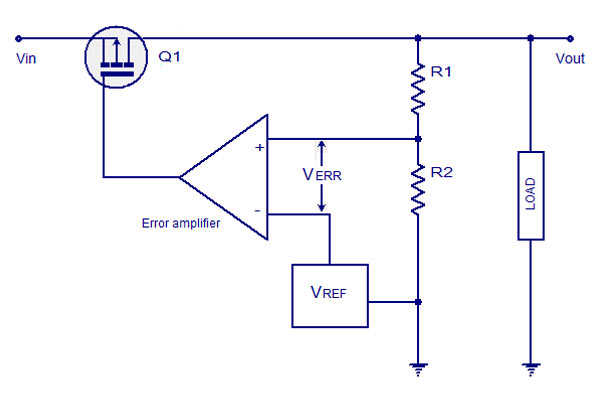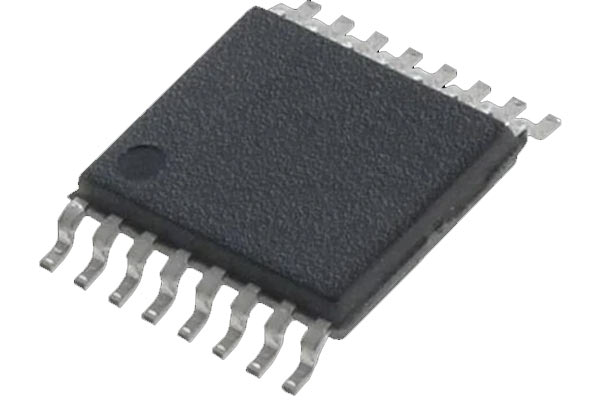Products Category
- FM Transmitter
- 0-50w 50w-1000w 2kw-10kw 10kw+
- TV Transmitter
- 0-50w 50-1kw 2kw-10kw
- FM Antenna
- TV Antenna
- Antenna Accessory
- Cable Connector Power Splitter Dummy Load
- RF Transistor
- Power Supply
- Audio Equipments
- DTV Front End Equipment
- Link System
- STL system Microwave Link system
- FM Radio
- Power Meter
- Other Products
- Special for Coronavirus
Products Tags
Fmuser Sites
- es.fmuser.net
- it.fmuser.net
- fr.fmuser.net
- de.fmuser.net
- af.fmuser.net ->Afrikaans
- sq.fmuser.net ->Albanian
- ar.fmuser.net ->Arabic
- hy.fmuser.net ->Armenian
- az.fmuser.net ->Azerbaijani
- eu.fmuser.net ->Basque
- be.fmuser.net ->Belarusian
- bg.fmuser.net ->Bulgarian
- ca.fmuser.net ->Catalan
- zh-CN.fmuser.net ->Chinese (Simplified)
- zh-TW.fmuser.net ->Chinese (Traditional)
- hr.fmuser.net ->Croatian
- cs.fmuser.net ->Czech
- da.fmuser.net ->Danish
- nl.fmuser.net ->Dutch
- et.fmuser.net ->Estonian
- tl.fmuser.net ->Filipino
- fi.fmuser.net ->Finnish
- fr.fmuser.net ->French
- gl.fmuser.net ->Galician
- ka.fmuser.net ->Georgian
- de.fmuser.net ->German
- el.fmuser.net ->Greek
- ht.fmuser.net ->Haitian Creole
- iw.fmuser.net ->Hebrew
- hi.fmuser.net ->Hindi
- hu.fmuser.net ->Hungarian
- is.fmuser.net ->Icelandic
- id.fmuser.net ->Indonesian
- ga.fmuser.net ->Irish
- it.fmuser.net ->Italian
- ja.fmuser.net ->Japanese
- ko.fmuser.net ->Korean
- lv.fmuser.net ->Latvian
- lt.fmuser.net ->Lithuanian
- mk.fmuser.net ->Macedonian
- ms.fmuser.net ->Malay
- mt.fmuser.net ->Maltese
- no.fmuser.net ->Norwegian
- fa.fmuser.net ->Persian
- pl.fmuser.net ->Polish
- pt.fmuser.net ->Portuguese
- ro.fmuser.net ->Romanian
- ru.fmuser.net ->Russian
- sr.fmuser.net ->Serbian
- sk.fmuser.net ->Slovak
- sl.fmuser.net ->Slovenian
- es.fmuser.net ->Spanish
- sw.fmuser.net ->Swahili
- sv.fmuser.net ->Swedish
- th.fmuser.net ->Thai
- tr.fmuser.net ->Turkish
- uk.fmuser.net ->Ukrainian
- ur.fmuser.net ->Urdu
- vi.fmuser.net ->Vietnamese
- cy.fmuser.net ->Welsh
- yi.fmuser.net ->Yiddish
A Complete Guide to the LDO Regulator in 2021

When integrating a voltage supply to any other equipment, we may encounter certain unwanted voltage variations, and they would cause severe damage to the devices. So, there is a need to maintain a constant voltage at the supply level. This is where ‘Voltage Regulator‘ comes into the picture. Voltage regulators are the devices that maintain a stable output voltage irrespective of the changes at the input voltage and load.
Based on their design, the ‘ Low-Dropout Regulator’ also popularly known as ‘LDO’ is invented over time. The lower the dropout voltage, the more efficient the LDO solution.
This share contains what is LDO, the introduction to the LDO regulator circuit diagram, 6 main parameters of LDO regulator, and the applications of LDO regulators. If you are a fan of electronic technology, or if you work in the field of electronics, you should learn about LDO regulators through this share. Let's keep reading!
Sharing is Caring!
Content
● What Does an LDO Regulator Circuit Diagram Contain?
● 6 Main Parameters of LDO Regulator
● What are the Applications of LDO Regulators?
● FAQ
LDO stands for Low-Dropout Regulator. It is a DC Linear voltage regulator. Invented by Robert Dobkin in 1977, LDO has a simple and inexpensive design. As its name ‘Low Dropout’ suggests, this regulator can operate stably at as low as 1V.
This minimum potential difference between input and output voltage necessary for the operation of the regulator is known as ‘Dropout Voltage’. When the potential difference is less than the dropout voltage, the regulator operation becomes unstable.
Working for the working of LDO input voltage is supplied to a component known as ‘Pass element’. The pass element is usually an N channel FET. Pass element operates in the linear region and reduces the given input voltage level to the required output voltage level. This voltage next is passed to an element called ‘ Error Amplifier’. This error amplifier compares the output from the Pass element to a reference voltage.
This error amplifier then changes the operating point of FET’s gate to remove the error between the reference voltage and the pass element’s output voltage.
Thereby maintaining a required steady output voltage at the regulator’s output end.Elements of LDO RegulatorThe below diagram shows the circuit of an LDO Regulator.

What Does an LDO Regulator Circuit Diagram Contain?
To understand the working of LDO we must understand the meaning and configurations of certain elements of the LDO regulator. Some of the important elements of LDO are Voltage reference, Error Amplifier, Feedback, Pass Element, and Output Capacitor.
● Pass Element
Pass Element is one of the main components of LDO. This is usually an N channel or P channel FET. LDO uses an open-collector topology instead of an emitter follower topology. Hence, a transistor can be easily driven into saturation using the available voltages of the regulator.
The use of FET for the pass element reduces the power consumption of the device.
● Feedback
Feedback is a process where a fraction of output is feedback into the circuit as input. To regulate the power supply and remove unwanted voltage negative feedback loop is used in the regulator.
Here the output voltage is feedback to the Error Amplifier. This amplifier compares the output voltage with a reference voltage. Any error obtained is used to change the operating point of the FET’s gate until a constant output voltage is obtained.
● Error Amplifier
A differential amplifier is used as Error Amplifier in the LDO regulator. The differential amplifier amplifies the difference between two voltages. This error amplifier has two inputs.
One of the inputs is supplied with a fraction of output voltage determined by the feedback voltage divider circuit.
The second input of the error amplifier is supplied with a stable reference voltage. The error amplifier calculates the difference between its two input voltages. This error voltage is used to control the power supply of FET so that a constant output voltage is obtained.
If the feedback voltage is lower than the reference voltage, the gate of FET is pulled lower. Thereby increasing the output voltage by allowing more current to pass.
● Voltage Reference
This voltage stays fixed irrespective of variations in power supply, temperature, load, or time. As one of the inputs of the differential amplifier, choosing a voltage reference is highly useful to get steady output values.
Here, we use a bandgap voltage reference. It has a voltage value of around 1.25V.
● Output Capacitor
For stability of the LDO regulator output, the capacitor is used. The ESR value of the output capacitor highly affects the stability of this device. It also affects the transient response to changes in the load current.
Any good quality capacitor that has minimum capacitance and maximum ESR values can be used.

6 Main Parameters of LDO Regulator
Some of the important parameters of the LDO Regulator are Dropout Voltage, Quiescent Current, Efficiency, Transient Response, Line Regulation, and Load Regulation.
● Dropout Voltage
The potential difference between input and output voltage, below which no regulation occurs is known as the Dropout voltage of a regulator. For the LDO regulator, the dropout voltage is very low, which means it can operate at levels very close to the required output voltage.
Regulators with lower dropout voltages have higher efficiency.
The Introduction to the Dropout Voltage, Which is Important to the LDO
● Quiescent Current
Quiescent current is also known as Ground current. It is the difference between input current and output current.
To maximize the current efficiency of the circuit lower quiescent current has to be maintained. It is the current collected by the device when no load or a very light load is connected. The value of the quiescent current is determined by the pass elements, temperature, etc…
● Efficiency
The efficiency of the LDO regulator highly depends on its quiescent current, input voltage, and output voltage. The efficiency of LDO is calculated as:
Efficiency = (IoVo/([Io + Iq]Vi) * 100
Here, Io is the output current, ‘Iq’ is the quiescent current, ‘Vi’ is the input voltage and Vo is the output voltage.
The decrease in dropout voltage and quiescent current increases the efficiency of the regulator. This also decreases the power dissipation of the circuit.
● Transient Response
The maximum output voltage variation allowed for the step change of load current is known as Transient Response.
Transient voltage variation is calculated as :
ΔV tr, max = (Io, max/Co+ Cb)Δt1 + ΔVESR
Where Δt1 = closed-loop bandwidth of LDO regulator, ΔVESR = voltage variation due to ESR of the output capacitor. Co = output capacitor value, Cb = Bypass capacitor, usually added to output capacitor, Io, max = Maximum load current.
● Line Regulation
The circuit’s ability to maintain the specified output voltage with varying input voltage is known as Line Regulation. It is determined by the ratio of variation in output voltage to the variation in input voltage.
Line Regulation = ΔVo/ΔVi
Line regulation is a steady-state parameter. Hence, all frequency components are neglected. Increasing the open-loop gain improves the line regulation of the circuit.
● Load Regulation
The ability of the circuit to maintain the specified output voltage under varying load conditions is known as Load Regulation.
An increase in the open-loop gain improves the load regulation of the circuit.
Load Regulation = ΔVo/ΔIoLike Line regulation, Load regulation is also a steady-state parameter.

What are the Applications of LDO Regulators?
LDO regulator has a smaller device size. Unlike other DC-DC regulators, LDO does not have switching noise as no switching takes place. It has a very simple design. LDO regulator is used in cellular telephones, Battery-powered equipment, laptops, notebook computers, various consumer electronics, Linear power supplies with High efficiency, etc…In addition to functioning as a regulator, LDO is also used as a Filter to removes ripples caused in the output voltage when switchers are used in the circuit.
1. Q: What is the Use of LDO Regulator?
A: LDO regulator is used to obtain lower output voltage from main power supply or battery. The output voltage is very stable when the line and load change, is not affected by the change of ambient temperature, and remains stable over time.
2. Q: How Does an LDO Work?
A: LDO is a linear regulator with a small voltage drop between input and output. It can work well even if the output voltage is very close to the input voltage. Unlike the linear regulator, it requires a large voltage drop between input and output. The output can work normally.
3. Q: What is the Difference between LDO and Voltage Regulator?
A: There are two types of linear regulators: standard linear regulator and low dropout linear regulator (LDO). The difference between the two is the margin or voltage drop required to pass through the element and maintain a stable output voltage.
4. Q: What is the Difference between LDO and DC-DC?
A: The DC / DC converter regulates power by opening and closing switching elements (FETs, etc.). On the other hand, the LDO regulator regulates the power supply by controlling the on resistance of the FET. The DC / DC converter is very efficient in converting electric energy through switching control.
In this page, we know what is an LDO, the important components in LDO regulator circuit diagram, the essential parameters of LDO regulator, and LDO regulators applications. If you think it is helpful for you, share it with your friends! Please follow us, and we'll keep updating the latest techinical news for you.
Also Read
● How LTM8022 μModule Regulator Provides a Better Design for Power Supply?
● Things You Should Not Miss About Facebook Meta and Metaverse
● How LTC3035 LDO Regulator Balance Low Dropout Voltage and Small Volume?
● How LTM4641 μModule Regulator Efficiently Prevents Overvoltage?

